It is in human nature to seek the restoration of architecture that has been destroyed. Often, the immediate response is to reconstruct the destroyed structure as was, as quickly as possible to suppress and erase the trauma of destruction by eliminating its visible scars. As Lebbeus Woods puts it, “the destruction of history drives its survivors to react by elevating history to a near-religious importance.” To erase the memory of the tragedy and loss is to erase the history of what happened.
Destruction manifests in various scales, demanding careful assessment before deciding on the approach to rebuilding. Complete destruction leaves limited options, either adhere to Woods’ first principle of restoring what has been lost to its pre-war condition, or adopting the second principle of demolishing the damaged and building something entirely new. When a significant portion of the building remains intact and the destruction is limited, a unique opportunity arises to build upon the damaged form and introduce something new and balance the act of preservation with reinvention. The dialogue between old and new, employing a contrast in materials, form and space, can provide a dramatic tension that acknowledges and respects both the building and the damage that has been done to it.
I explored four partially damaged buildings that underwent restoration aiming to reimagine the reconstructed spaces beyond their original forms through the medium of collage. The four buildings were: the Alte Pinakothek in Munich, Germany; The Pentagon in Arlington, Virginia; the Stari Most Bridge in Bosnia and Herzegovia; and The Frauenkirche in Dresden, Germany.
Alte Pinakothek
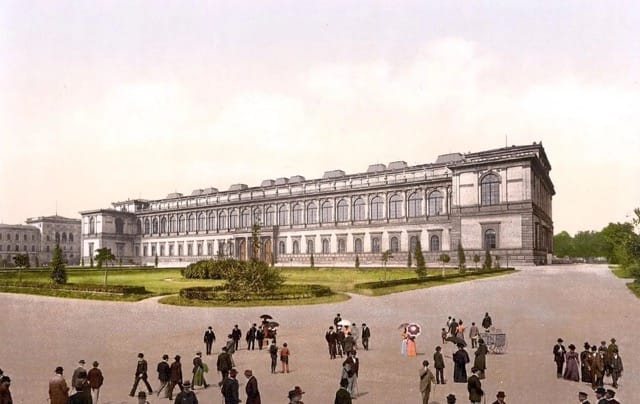


The Alte Pinakothek is located in Munich, Germany and was established in 1836 and was the largest museum in the world at the time. It was a pioneer of museums, the sequence of large halls lit by skylights and the adjoining cabinets on the north side became the model for other museum buildings. Built in the Neo-Renaissance style, the Pinakothek stood out from the castle-like museum type common at the time. It was severely damaged by bombing during WWII and if not for architect Hans Dollgast making a case for reconstruction as a cost-effective solution, it would have been demolished. Aside from various interior improvements and changes, the exterior was rebuilt in a way that it remained true to its original form, with exposed brickwork so that they would remain recognizable as “wounds.”

The Pentagon



The Pentagon is located in Arlington, Virginia and was built in 1943 and designed by George Bergstrom. It was built mainly of reinforced concrete with limestone facing. Fun fact, the land it was initially planned on was bordered on five sides by roads, so a five-sided building was designed. The structure has five floors, a mezzanine and a basement. It consists of 5 concentric pentagons with 10 spoke-like corridors connecting. In 2001, part of the southwest side was destroyed in a terrorist attack. The Phoenix Project was the name of the project to repair the damage with the goal to reoccupy the outermost ring of the rebuilt section by September 11th, 2002, a year from the initial attack.

Stari Most Bridge


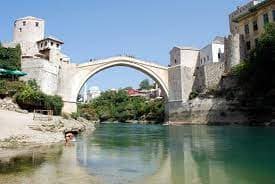
The Stari Most Bridge is located in Bosnia and Herzegovina. It was originally built in 1566, the bridge spans 100 feet, is 12 feet wide and is 80 feet tall. It took 9 years for it to be build. In 1993, during the Croat-Bosniak war it was completely destroyed. It stood for 400 years and in one day it was destroyed. For years, the bridge represented unity, bridging the two sides of the population, the Croatians on the west with the Bosnian Muslims on the east. Immediately calls for reconstruction began in 1994, but didn’t begin until 2001. The idea was to reconstruct the bridge identically. Similar construction techniques were used although controversy arose over the speed of the rebuild, prompting differing opinions on whether or not it should have been rebuilt.
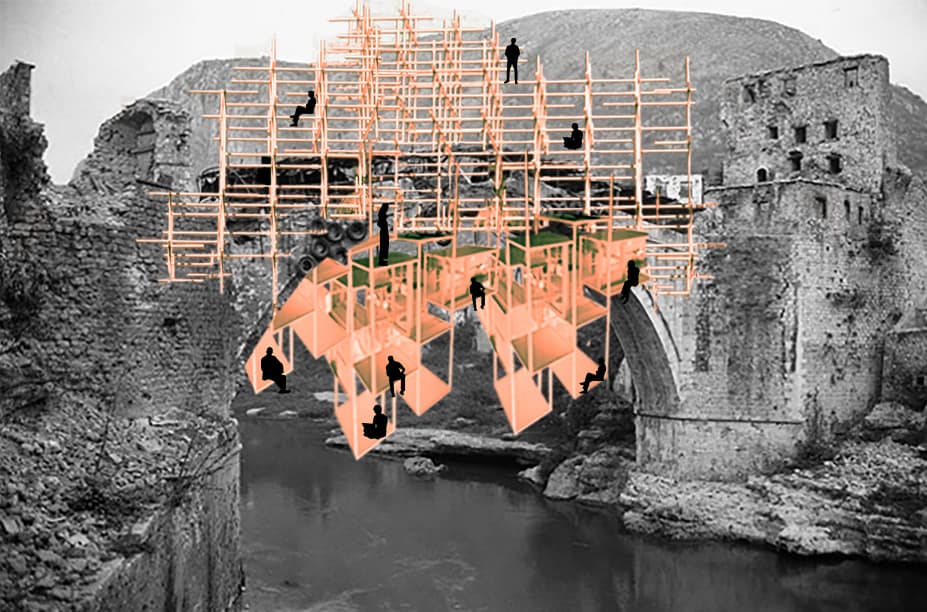
The Frauenkirche
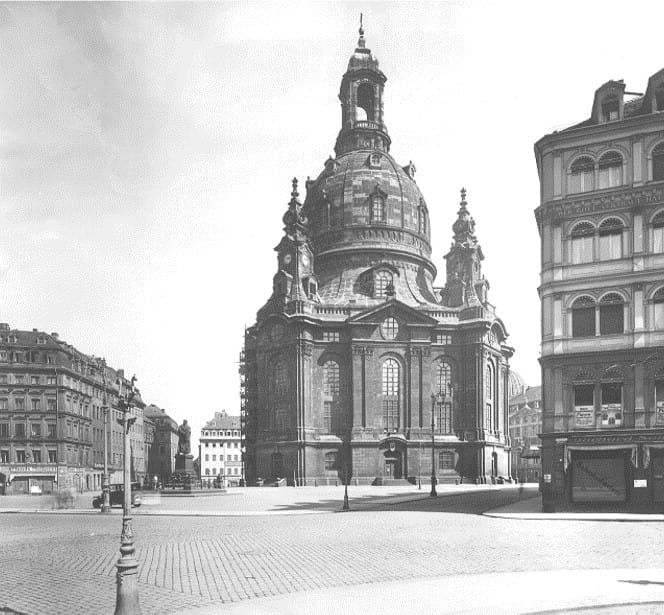


The Frauenkirche is located in Dresden Germany, and was completed in 1743. During WWII along with the city of Dresden it was completely destroyed. The city decided to rebuild the church as it was, using plans from builder George Bahr in the 1720s. It started in 1993 and lasted until 2005. Except for its dome, it was rebuilt using original material and plans with the addition of modern technology. The heap of rubble was documented and carried off stone by stone. The builders relied on thousands of old photographs, memories, and old purchase orders. Older stones are covered with fire and patina, making the difference between the two noticeable. The builders relied on thousands of old photographs, memories, and old purchase orders. It was a symbol for the reunification of Germany, post-Cold war.
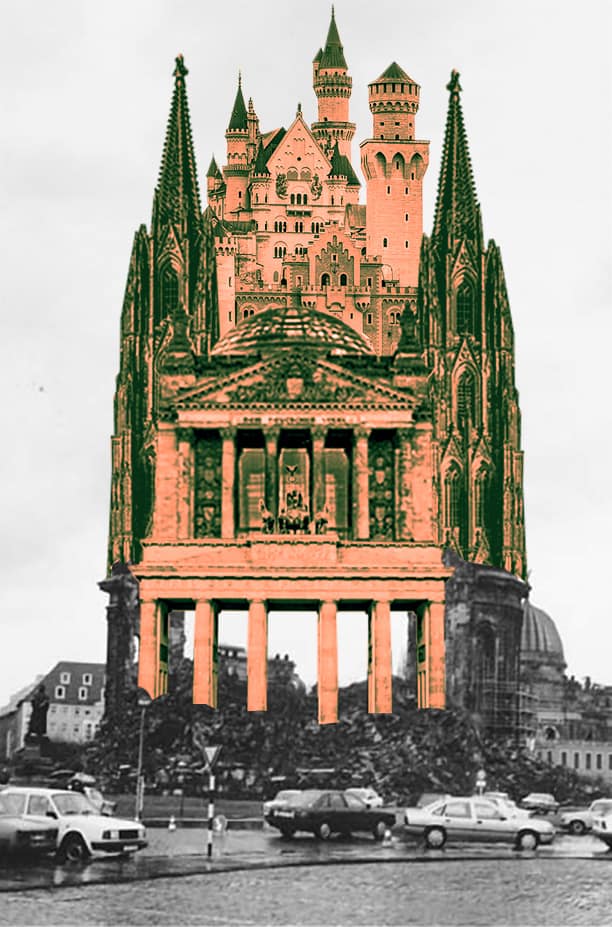
Architecture has the power to engage. Upon reflection, a commonality in my collages (minus the Frauenkirche) is the human element. The rebuilding of spaces voided by destruction should actively engage people in the dynamic space between the past and the present (old and the new). It is an opportunity to acknowledge past events and offer a platform for exploration and understanding.
ALWAYS INTERESTING!!! LOVE YA!